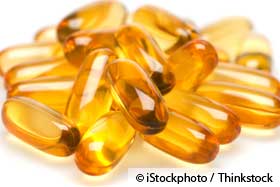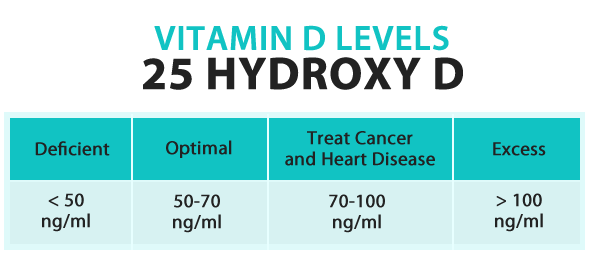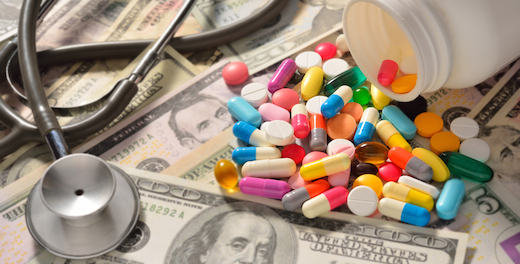 Research has recently found that vitamin D has a protective effect against arterial stiffness and impaired blood vessel relaxation.
Research has recently found that vitamin D has a protective effect against arterial stiffness and impaired blood vessel relaxation.
Study participants with reduced levels of vitamin D had increased arterial stiffness and vascular function impairment. However, among those whose vitamin D levels were normalized over a six month period, vascular health improved and blood pressure measurements declined.
Science Newsline Reports:
"The results add to evidence that lack of vitamin D can lead to impaired vascular health, contributing to high blood pressure and the risk of cardiovascular disease."
In related news, researchers have also found that high level of vitamin D could be protective against the development of early age-related macular degeneration (AMD), a leading cause of vision loss in adults.
In women younger than 75, those who had 25-hydroxyvitamin D concentrations lower than 38 nanomoles per liter were more likely to have age-related macular degeneration than women with concentrations greater than 38 nanomoles per liter.
This isn't the first time vitamin D has been linked to improved heart health. In fact, there's overwhelming evidence that this nutrient is essential for your heart and cardiovascular system.
Sources:
 Science Newsline April 4, 2011
Science Newsline April 4, 2011
 Archives of Ophthalmology April 2011; 129(4): 481-489
Archives of Ophthalmology April 2011; 129(4): 481-489
 Journal of General Internal Medicine April 21, 2011 [Epub ahead of print]
Journal of General Internal Medicine April 21, 2011 [Epub ahead of print]
 Diabetes Care May 2011;34(5):1133-8
Diabetes Care May 2011;34(5):1133-8
Vitamin D Deficiency Linked to Stiffer Arteries and High Blood Pressure
Even if you're considered generally "healthy," if you're deficient in vitamin D, your arteries are likely stiffer than they should be, and your blood pressure may run higher than recommended due to your blood vessels being unable to relax. That's the conclusion researchers from the Emory/Georgia Tech Predictive Health Institute has reached. Their findings were recently presented at the annual American College of Cardiology meeting in New Orleans.
According to researcher Dr. Al Mheid:
"We found that people with vitamin D deficiency had vascular dysfunction comparable to those with diabetes or hypertension."
That's a truly profound statement!
Unfortunately, the vast majority of people are severely deficient in vitamin D, regardless of race or nationality. In the United States, the late winter average vitamin D is only about 15-18 ng/ml, which is considered a very serious deficiency state. Overall, it's estimated that 85 percent of the American public are deficient, and as much as 95 percent of U.S. senior citizens.
Another recent study also confirms the link between vitamin D deficiency and high blood pressure. Published in the Journal of General Internal Medicine, the study found that the disproportionately higher rates of hypertension among African Americans compared to Caucasians appears to be due to higher incidence of vitamin D deficiency. Life Extension Magazine quotes researcher Dr. Fiscella, professor of Family Medicine at the University of Rochester Medical Center:
"Our study confirms that vitamin D represents one piece of the complex puzzle of race and blood pressure, and since black-white differences in blood pressure represent thousands of excess deaths due to heart disease and stroke among blacks, we believe that simple interventions such as taking vitamin D supplements might have a positive impact on racial disparities."
The link between vitamin D status and heart health becomes even more apparent when you consider that only ONE out of 1,900 people evaluated meet the American Heart Association (AHA) definition of ideal cardiovascular health!
The AHA's definition of ideal cardiovascular health is the combination of the following seven factors:
- Nonsmoking
- body mass index less than 25
- goal-level physical activity
- healthy diet
- untreated cholesterol below 200
- blood pressure below 120/80
- fasting blood sugar below 100
And out of 1,900 people, only one single person could claim this health status. Is it any wonder heart disease is one of the top killers in the US?
Raise Your Vitamin D Status to Improve Your Cardiovascular Health
Fortunately, it's been repeatedly shown that by increasing your vitamin D levels, you can improve your cardiovascular health and lower your blood pressure, and this latest research confirms this. Forty-two of the participants who raised their vitamin D to normal levels had an average drop in blood pressure of 4.6 millimeters mercury.
Keep in mind that "normal" is not the same as optimal, so increasing your levels to the recommended optimal levels as indicated in the chart below will undoubtedly impart an even more beneficial effect—not just for your cardiovascular health but also your health in general, from improving your immune function to cutting your risk of cancer in half.
But just how does vitamin D work in respect to your vascular health?
"Throughout the body, a layer of endothelial cells lines the blood vessels, controlling whether the blood vessels constrict or relax and helping to prevent clots that lead to strokes and heart attacks.
"There is already a lot known about how vitamin D could be acting here," Al Mheid says. "It could be strengthening endothelial cells and the muscles surrounding the blood vessels. It could also be reducing the level of angiotensin, a hormone that drives increased blood pressure, or regulating inflammation."
Vitamin D also improves your cardiovascular health through a number of other mechanisms, such as:
- Increasing your body's natural anti-inflammatory cytokines
- Suppressing vascular calcification
- Inhibiting vascular smooth muscle growth
A previous study found women who take vitamin D supplements lower their risk of death from heart disease by one-third, and other researchers have found that people with the lowest average vitamin D levels had a 124 percent greater risk of dying from all causes and a 378 percent greater risk of dying from a heart problem.
Beware: 100 Million Americans May Be Unnecessarily Labeled as Having Abnormal Blood Pressure
As a side note, I want to quickly touch on two related items here here.
First, according to a study published in March in the Journal of General Internal Medicine, as many as 100 million Americans may currently be misclassified as having abnormal blood pressure! Looking at data for nearly 13,800 people who were followed for two decades, the researchers examined and compared the independent contributions of diastolic- (DBP) and systolic blood pressure (SBP) on mortality.
In those over the age of 50, having systolic blood pressure above 140, independent of DBP, significantly increased their risk of premature death. Meanwhile, in those underthe age of 50, diastolic blood pressure above 100 was linked to significant increases in premature death. As a result, the authors strongly suggest revising the definition of "normal" blood pressure (i.e. below 120/80), using these alternative cut-off points.
Science Daily quotes lead researcher Dr. Taylor:"Our findings highlight that the choice of approach used to define normal blood pressure will impact literally millions of Americans. If we cannot reliably see an effect on mortality in a large group of individuals followed for nearly 20 years, should we define the condition as abnormal? We believe considering this kind of approach represents a critical step in ensuring that diagnoses are given only to those with a meaningful elevation in risk, and targeted towards individuals most likely to benefit."
This is definitely important, because not only are tens of millions of people taking unnecessary blood pressure medication as a result, but it has now become more or less standard practice to also prescribe an antidepressant along with that blood pressure reducer! The thought is that high blood pressure is the result of stress, which is oftentimes the case.
However, antidepressants have no benefit on this kind of stress and can only put your health at even greater risk... so please, AVOID making the mistake of taking an antidepressant for high blood pressure! If your doctor recommends or prescribes one for your high blood pressure and not your depression, REFUSE it, as there is simply no justification for ever using these dangerous drugs for this purpose.
Vitamin D May Prevent Diabetes, and Helps Reduce Heart Disease Risk if You're Diabetic
Vitamin D is also an important factor in diabetes. First, having lower levels of vitamin D has been linked to an increased risk of developing type 2 diabetes. After following more than 5,000 people for five years, the Australian research team found that those with lower than average vitamin D levels had a 57 percent increased risk of developing diabetes, compared to those within the recommended range. According to lead researcher Dr. Claudia Gagnon:
"Studies like ours have suggested that blood levels of vitamin D higher than what is recommended for bone health may be necessary to reduce the risk of developing type 2 diabetes."
Low levels of vitamin D are also known to nearly double your risk of cardiovascular disease if you already have diabetes. A 2009 study shed light on why vitamin D has such a significant impact on diabetics' heart health.
Diabetics who are deficient in vitamin D cannot process cholesterol normally, so it builds up in their blood vessels, hence increasing the risk of heart attack and stroke. Vitamin D inhibits the uptake of cholesterol by cells called macrophages. Macrophages are dispatched by your immune system in response to inflammation and are often activated by diseases such as diabetes.
When you're deficient in vitamin D, your macrophage cells absorb more cholesterol, and can't get rid of it. The macrophages then get clogged with cholesterol and become what scientists call "foam cells," which are one of the earliest markers of atherosclerosis.
So, if you're diabetic it's even more important to maintain therapeutic levels of vitamin D.
High Vitamin D Status also Improves Survival Rates in Heart Failure Patients
The study, conducted at the University Medical Center in the Netherlands, also suggested that low levels of vitamin D are associated with activation of the Renin Angiotensin System (RAS – a pivotal regulatory system in heart failure) and an altered cytokine profile.
According to the researchers, patients with lower concentrations had a higher risk of death or required re-hospitalization, whereas patients with higher concentrations had lower survival risks for these endpoints.
How Much Vitamin D do You Need to Decrease Arterial Stiffness?
In March of last year, a study published in the Journal of Clinical Endocrinology & Metabolism looked at the effect of different dosages of vitamin D in relation to arterial stiffness in African American teens.
Forty-four participants were randomly assigned to receive either 400 IU of vitamin D per day (which is the recommendation of the American Academy of Pediatrics) or 2,000 IU of vitamin D per day.
Those who took 400 IU's a day did not achieve vitamin D sufficiency while those who took 2,000 IU's a day did, and consequently had a decrease in central arterial stiffness. As demonstrated in this study, there's no doubt that the current daily recommended allowances (RDA) for vitamin D are FAR too low to achieve optimal health benefits!
As of right now, the conventional RDAs are only:
- 400 IU for infants, children and adolescents
- 200 IU for adults up to age 50
- 400 IU for adults aged 51 to 70
- 600 IU for seniors over 70
Research has repeatedly shown you may need as much as ten times these amounts, depending on your current status!
According to vitamin D experts, the ideal vitamin D levels are actually far higher than the conventional "normal," so when you get your levels checked, don't be satisfied with a simple, "You're within the normal range." Instead, make sure your levels are within these ideal therapeutic ranges:
As you can see, anything below 50 ng/ml is now believed to be a deficiency state, and the optimal range to treat heart disease is between 70-100 ng/ml. Meanwhile, conventional medicine still considers 32 ng/ml to be the threshold for "optimal health." Please do not be fooled by that conservative recommendation!
Please note that levels over 100 ng/ml are likely only a problem if they are obtained by swallowing oral vitamin D3. If you raise your level to over 100 by sun exposure it is unlikely to be problematic. In the winter I live in the sub-tropics on the beach and typically get two hours of sun every day, which raises my levels to over 100 ng/ml. This is also typical for many healthy lifeguards in the summer.
Vitamin D Status and Your Vision
Another recent study has also implicated vitamin D deficiency in the development of macular degeneration, which is the leading cause of blindness in the US.
In women younger than 75, having vitamin D levels below 38 nanomoles per liter equated to higher risk of developing age-related macular degeneration. Those whose vitamin D intake was among the top one-fifth of participants had a 59 percent lower risk of developing AMD compared to women whose intake was among the lowest fifth.
Take Action Before it's Too Late
Unfortunately, the most common symptom of heart disease is sudden death, so you simply MUST be proactive.
Typically, there are absolutely no indications of a problem, no signs like chest pain or shortness of breath. You simply have NO symptoms at all before getting struck by the chest pain that kills you. Sudden cardiac death strikes more than 300,000 people every year in the US alone.
This is a tragedy made even more upsetting as heart disease, just like type 2 diabetes, is one of the easiest diseases to prevent and avoid, if you're proactive! For example, vitamin D deficiency is incredibly easy to diagnose and fix, and can dramatically reduce your risk.
One of the first steps you should take is to watch my one-hour free lecture on vitamin D, which will tell you what your optimal vitamin D levels should be along with how to safely get them there.
Next, assess your heart disease risk factors.
Keep in mind that your total cholesterol level is just about worthless in determining your risk for heart disease unless it's close to 300 or higher. And, perhaps more importantly, you need to be aware that cholesterol is not the CAUSE of heart disease. If you become overly concerned with trying to lower your cholesterol level to some set number, you will be completely missing the real problem.
The ratios you need to be concerned with when evaluating your heart disease risk are:
- Your HDL/Cholesterol ratio
- Your Triglyceride/HDL ratios
Your HDL percentage is a very potent heart disease risk factor. Just divide your HDL level by your cholesterol. That percentage should ideally be above 24 percent. Below 10 percent, it's a significant indicator of risk for heart disease.
You can also do the same thing with your triglycerides and HDL ratio. Simply take your triglyceride level and divide it by your HDL level. That percentage should be below 2.
Fasting Insulin Levels: Another Important Risk Factor for Heart Disease
There's a reason why diabetes significantly raises your risk of heart disease. The factor that links these two diseases is insulin, so naturally, keeping your insulin levels low is imperative for preventing and treating both.
Further, studies have shown that people with a fasting blood sugar level of 100-125 mg/dl had a nearly 300% increase higher risk of having coronary heart disease than people with a level below 79 mg/dl.
Normal fasting blood glucose is below 100 mg/dl, but for optimal health it should be closer to 80.
Any meal or snack high in unhealthy carbohydrates like sugar and refined grains generates a rapid rise in blood glucose, followed by insulin to compensate for the rise in blood sugar. The insulin released from eating too many carbohydrates promotes fat and makes it more difficult for your body to lose fat, particularly around your belly, and this is one of the major contributors to heart disease.
Reducing your intake of fructose and grains, including corn-based foods and potatoes is perhaps THE most important strategy to help you lower your blood glucose and prevent insulin resistance, diabetes, and heart disease.
Helpful Supplements for Heart Disease and Macular Degeneration
Emerging research is pointing to L-arginine, an amino acid, as a powerful player in your cardiovascular health. In the latest research, supplementation with L-arginine resulted in multiple beneficial vascular effects in people with multiple risk factors for heart disease.
L-arginine is a precursor to nitric oxide and is actually the only known nutritional substrate in your vessel lining available to endothelial cells (a layer of cells that line the interior surface of blood vessels) for nitric oxide production. In other words, the lining in your vessels (endothelium) need L-arginine to create nitric oxide, which acts as a cellular signaling molecule in your body to help promote healthy blood vessel flexibility and dilation.
This is why a high-quality L-arginine supplement may be a simple way to enhance your body's supply, especially if you know you have risk factors for heart disease, such as high blood pressure, excess weight, or high insulin levels (diabetes).
You can also find L-arginine in dietary sources and may be able to somewhat enhance your levels by eating more:
- Nuts (walnuts, hazelnuts, pecans, Brazil nuts, almonds, cashews and peanuts)
- Sesame and sunflower seeds
- Coconut
- Raisins
- Dairy and meat
Additionally, chronic inflammation is a hallmark of everything I've covered in this article—diabetes, heart disease, and macular degeneration. A potent supplement to helpkeep inflammation in check is astaxanthin. This potent antioxidant exhibits VERY STRONG free radical scavenging activity, and protects your cells, organs and body tissues from oxidative damage.
What to Do if You're at Risk
If you find that you are at risk for heart disease, I urge you to get your vitamin D levels checked, and if you are deficient, take steps to increase your levels to the therapeutic range.
Then simply apply the Take Control of Your Health program. This will virtually eliminate your risk -- sometimes quite rapidly-- because it helps to significantly reduce inflammation in your body. And, keeping your inflammation levels low is key if you want to reduce your risk of heart disease.
An added boon of applying this program is that it will automatically also help you to prevent and treat type 2 diabetes.
Related Links:
 7 Simple Steps for a Healthy Heart
7 Simple Steps for a Healthy Heart
 Does High Cholesterol REALLY Cause Heart Disease?
Does High Cholesterol REALLY Cause Heart Disease?
 Heart Attack Triggers You Should Know
Heart Attack Triggers You Should Know
Source: Dr. Mercola




 By Dr. Joseph Mercola. D.O. -
By Dr. Joseph Mercola. D.O. - 